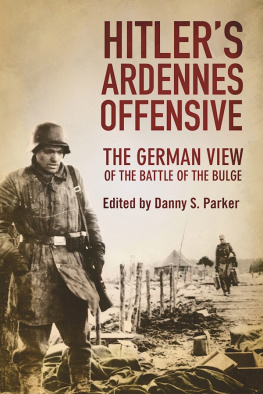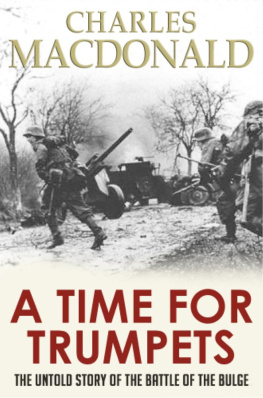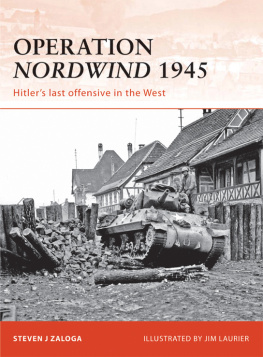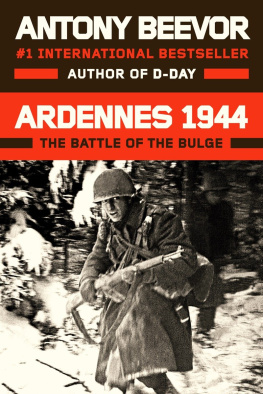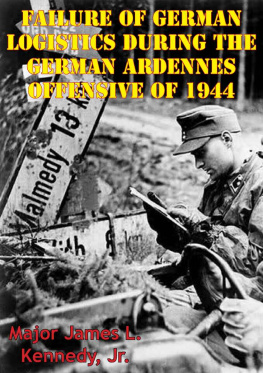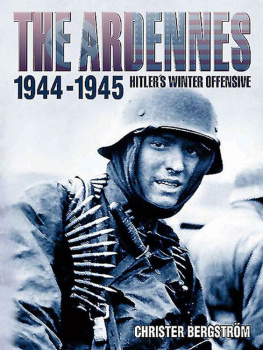Copyright 1997 Danny S. Parker/Lionel Leventhal Limited
All rights reserved. No part of this book may be reproduced in any manner without the express written consent of the publisher, except in the case of brief excerpts in critical reviews or articles. All inquiries should be addressed to Skyhorse Publishing, 307 West 36th Street, 11th Floor, New York, NY 10018.
Skyhorse Publishing books may be purchased in bulk at special discounts for sales promotion, corporate gifts, fund-raising, or educational purposes. Special editions can also be created to specifications. For details, contact the Special Sales Department, Skyhorse Publishing, 307 West 36th Street, 11th Floor, New York, NY 10018 or
Skyhorse and Skyhorse Publishing are registered trademarks of Skyhorse Publishing, Inc., a Delaware corporation.
Visit our website at www.skyhorsepublishing.com.
10 9 8 7 6 5 4 3 2 1
Library of Congress Cataloging-in-Publication Data is available on file.
Print ISBN: 978-1-5107-0361-2
Ebook ISBN: 978-1-5107-0370-4
First Skyhorse Publishing edition 2016
All rights to any and all materials in copyright owned by the publisher are strictly reserved by the publisher.
Cover design by Rain Saukas
Cover photo courtesy of National Archives
Printed in the United States of America
Contents
Sixth Panzer Army in the Ardennes Offensive
Interviews with SS-Oberstgruppenfhrer Josef Sepp Dietrich
Operations of the Sixth Panzer Army
by Generalmajor Fritz Krmer
The Fifth Panzer Army during the Ardennes Offensive
by General der Panzertruppen Hasso von Manteuffel
The Ardennes Offensive: Seventh Army
by General der Panzertruppen Erich Brandenberger
Questionnaire on the Ardennes Offensive
by Generalfeldmarschall Wilhelm Keitel and Generaloberst Alfred Jodl
The Ardennes Offensive: A Critique
by General der Infanterie Gnther Blumentritt
List of Illustrations and Maps
Illustrations: Pages 12936
Maps
Acknowledgements
The editor wishes to express appreciation to the individuals who helped with this modest volume. At the National Archives this includes John E. Taylor and Robin E. Cookson. At the Library of Congress, Roland E. Cogan assisted with the hunt for specific portions of the John Toland Collection and Dr. Richard Sommers at the U.S. Military History Institute dealt with several last-minute questions. For special perspective on the senior commanders involved, I am further indebted to my German friends, Hans Dieter Bechtold and Ralf Tiemann. At Greenhill Books, Kate Ryle and Ian Heath accepted the challenge of deciphering the poor original typescripts with which we had to contend no small task.
The photographs in the book are all attributed to the U.S. Army Signal Corps photographers from the period. The exceptions are the photographs of Generals Brandenberger and Blumentritt which are courtesy of Michael Wenger and his personal archives. Many thanks to all.
Danny Parker, 1997
Foreword
Antwerp? If we reach the Meuse we should go down on our knees and thank Godlet alone trying to reach Antwerp. When I first read these words, attributed to Generalfeldmarschall Gerd von Rundstedt the commander of the German ground forces in the west in 1944, it was as a schoolboy eager to devour any work of military history. Growing up in one of the nations that had been victorious in World War II, I soon found that almost all the available studies were written from the view point of the Allies with the Germans fulfilling something of a secondary, albeit essential, role. I became fascinated, however, with what the soldier and historian Basil Liddell-Hart called the other side of the hill and so began a lifelong study of the German military.
In the intervening years I have managed to broaden my reading considerably, yet Rundstedts reaction to Hitlers plan for an offensive that would strike through the Ardennes towards the port city of Antwerp epitomises, for me at least, the image of the German soldier of World War II as realistic, even fatalistic, yet compelled by a sense of duty and a unique concept of honor to carry on.
As an author, I know the value of primary sources be they official documents, period photographs or the letters of ordinary soldiers. Such sources are what make a work of serious research. In this book, Danny S. Parker has drawn on the resources of the Foreign Military Studies Office whose reports and interview transcripts were compiled by the US Armys European Theatre of Operations Historical Section from the recollections of literally hundreds of high-ranking German officers. Created shortly after the end of the war, these reports show that almost all, like Rundstedt, thought Hitlers plan impractical yet saw no other option but to carry out their orders.
Here, in their own words, are the thoughts and feelings of the officers who led the Ardennes Offensive, experienced professional soldiers who had accompanied their men through the heady days of the Blitzkrieg to the grind of the Eastern Front and now found themselves defending the borders of their homeland. The author has edited little and for the most part has left the reader to judge their veracity for himself. Something of which Im sure the old Field Marshal would have approved.
Dennis Oliver
The German operational plan
Preface
BY D ANNY S. P ARKER
Immediately after the cessation of hostilities in Europe following the Second World War, U.S. Army military historians seized upon a fleeting opportunity. As victors, they had the ability to interview prominent enemy commanders being then held prisoner in various locations within Germany. The European Theater of Operations (ETO) Historical Section saw this as a remarkable opportunity to provide historical data of great importance for future documentation of the great conflict. The project was first initiated by Colonel William A. Ganoe, but the use of interviews with German participants in the Ardennes operations was begun by Colonel S.L.A. Marshall and Captain Kenneth W. Hechler. Colonel Harold Potter turned the operation into a fully-fledged program with the assistance of a group of able young officers. During 19459, this was performed with great enthusiasm and dozens of interviews and written accounts were composed on a variety of campaigns. However, no conflict elicited as much in the way of interviews, commentary and analysis as the Ardennes Offensive known to the Allies as the Battle of the Bulge.
The reason for this interest in the Ardennes was simple: in no other campaign had the enemy so dramatically embarrassed the Allies with their cunning and sheer ferocity as in this final great desperate gamble in December of 1944. Some confident American G-2s went from predicting impending collapse of the German war machine to pondering whether the enemy might somehow have developed some new weapon of unprecedented destructive power. Top secret espionage missions were again repeated to ensure that no further German progress had been made in the area of atomic research. Of course, all of this was untrue, but after the war the Allies were understandably curious about the nature of the German attack. Much of the collected data was instrumental in providing information for the U.S. Army green books the official histories of the various campaigns. Until now, however, this material has largely been available only to military historians with a budget to see or reproduce the source documents. I have always seen this as unfortunate, given the insightful quality of many of the manuscripts which I have had occasion to review over the years. Since many of these were composed by the German commanders without access to their official records, or maps, there are inevitable errors associated with memory. Yet this series of manuscripts, composed so soon after the end of the war, provides a compelling snapshot of the German view of the Battle of the Bulge.

